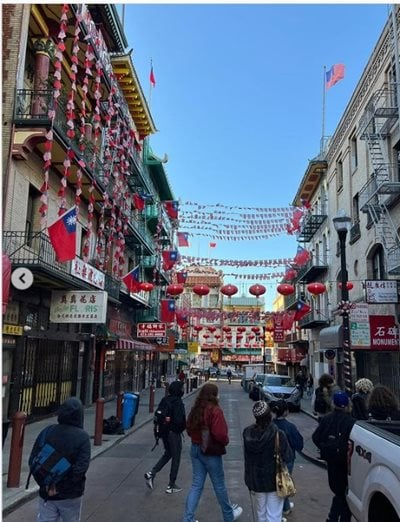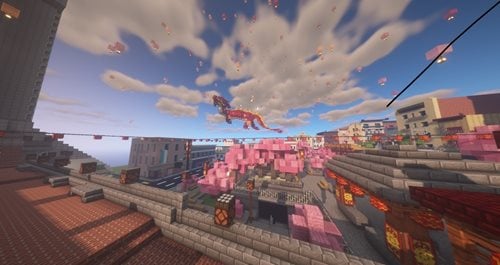Chinatown's alleyways in San Francisco are a link to its history and Chinatown CDC's youth participants knows this. They've provided tours and connected to that rich history for decades. "It started in 2001 as a neighborhood advocacy project," shares Veronica Seng, community organizer. "The alleyways in this neighborhood were not very clean or safe. The kids graded the alleyways and brought it to the city's attention."
 When the city responded that the alleyways of the nation's oldest Chinatown were private property, the group took on the responsibility of keeping them clean through an Adopt-an-Alleyway project created by Rev. Norman Fong, Chinatown CDC's past executive director. "For residents, the alleys are their front doors," Seng says of the 41 alleyways that connect the 22 blocks of Chinatown. "They're the lifeblood of the neighborhood." Eventually, the city offered funding for beautification and renovation.
When the city responded that the alleyways of the nation's oldest Chinatown were private property, the group took on the responsibility of keeping them clean through an Adopt-an-Alleyway project created by Rev. Norman Fong, Chinatown CDC's past executive director. "For residents, the alleys are their front doors," Seng says of the 41 alleyways that connect the 22 blocks of Chinatown. "They're the lifeblood of the neighborhood." Eventually, the city offered funding for beautification and renovation.
Youth at Chinatown CDC have given tours all the years since that advanced their own knowledge about the history of the neighborhood, and the history of affordable housing. And it was a way to share that history with others. Most tours attract 10 to 20 residents, but some are much larger. The group also arranges private tours.
The pandemic posed a new obstacle: How could they keep the tours going when in-person visits were being discouraged? Youth volunteers found the answer in Minecraft. They worked to replicate the neighborhood on the game platform, adding different components for the holidays: Candles on Halloween, dragons, lanterns and more for the Chinese New Year.
The Minecraft tours allow them to reach a new audience across the country, including people who have moved away. It allows them to reach a new audience locally, too. When the library put the tour on its schedule for "Tech Week," more than 100 patrons signed up.
have moved away. It allows them to reach a new audience locally, too. When the library put the tour on its schedule for "Tech Week," more than 100 patrons signed up.
Adam Zhu started working on project when things shut down during the pandemic. "I had nothing to do during the quarantine and I was looking for something productive to do since all I was doing was playing games and lazing around," he says. Now a freshman at UC Davis, he still tries to participate as often as he can, usually once a week.
One of his favorite spots on the map is Ross Alley. https://bestofsfchinatown.com/destinations/ross-alley/ It's marked, like the real one, with monkey paw prints in honor of the Monkey King, a trickster god in Chinese mythology. "I love mythology – both learning and teaching others about it," says Zhu.
Tours link to community development in several ways, says Seng. They attract tourists, corporate and community partners, and locals who might not know about some of the gentrification issues the community has faced. "It's a great teaching tool and a great opportunity for outreach," Seng says. "The care and dedication to the community starts with us. I love seeing kids, once they get the material down, advocating for the community."
The youth tour guides become truly engaged. As evidence, she cites the number – at least 10 -- who have returned to work on Chinatown CDC's staff after college, ready to give back to their community.
Lisa Yu, senior community organizer at Chinatown CDC, started in the youth program and served as a tour guide from 2013 to 2016. She met people from all over the world, she says. "I was able to incorporate a lot of what I know as a resident and what I did as a youth leader."
She met mentors and friends through the program. "As someone who has lived in Chinatown my whole life, it was amazing to learn about the rich stories and advocacy works that have shaped the Chinatown neighborhood I am a part of today. I also learned a lot of my communication skills through the program." She worked part-time through college and returned to CDC after graduating, she says, because she wanted to be a resource for current youth, the way past mentors helped her.
Comprehensive community development goes beyond housing itself, and includes issues like economics, culture and history. "Community engagement like this is important throughout the NeighborWorks network," says Paul Singh, NeighborWorks vice president, Community Initiatives. "It's a model that puts history – and youth – front and center."
05/31/2022

